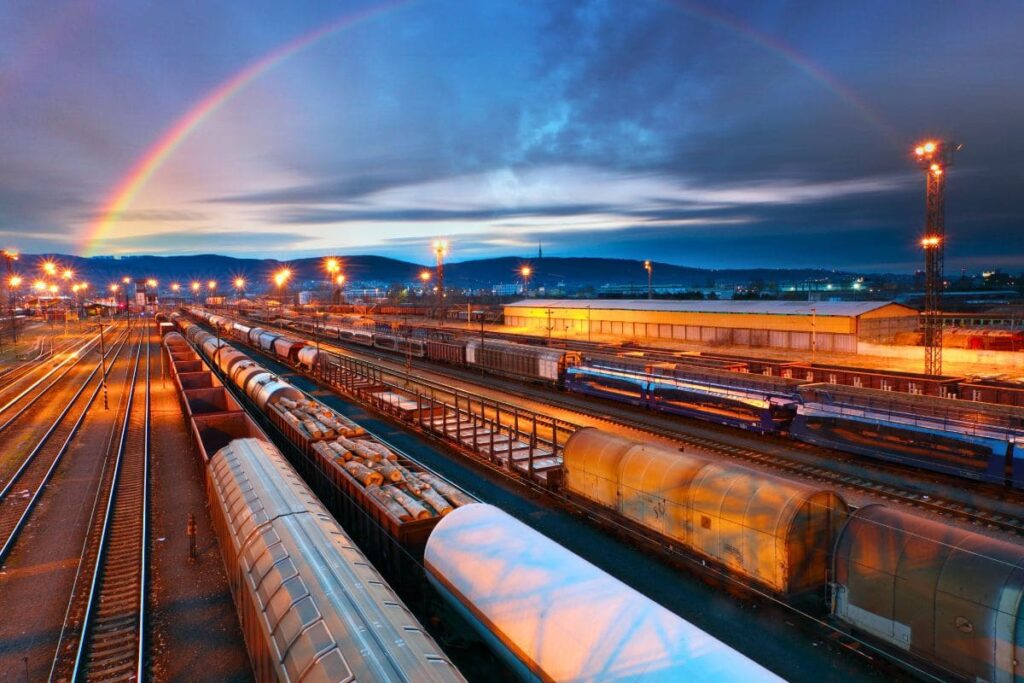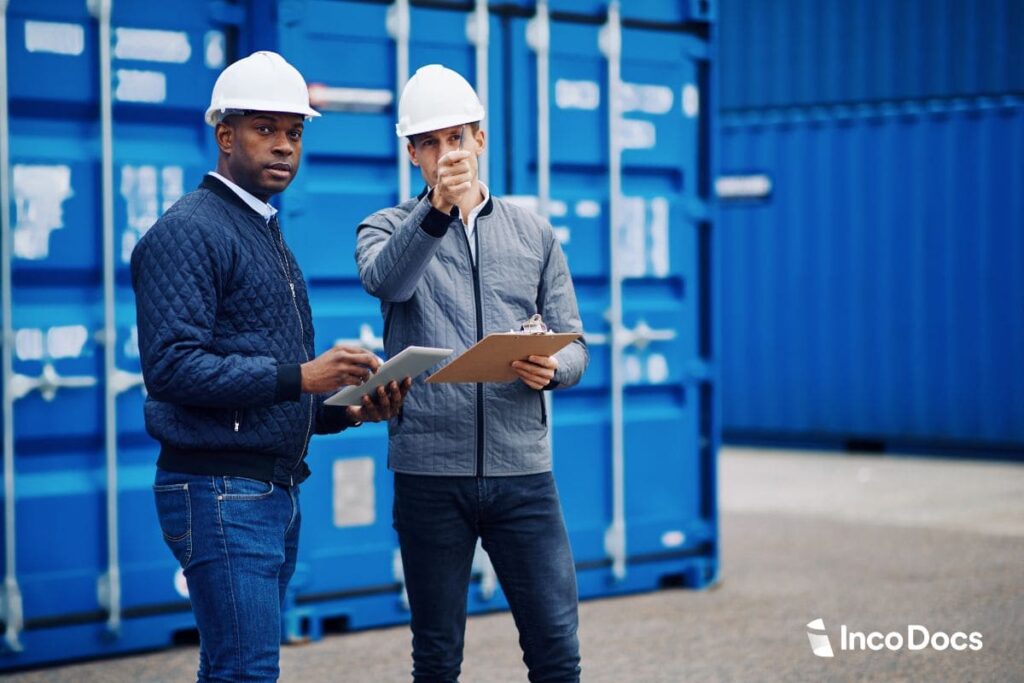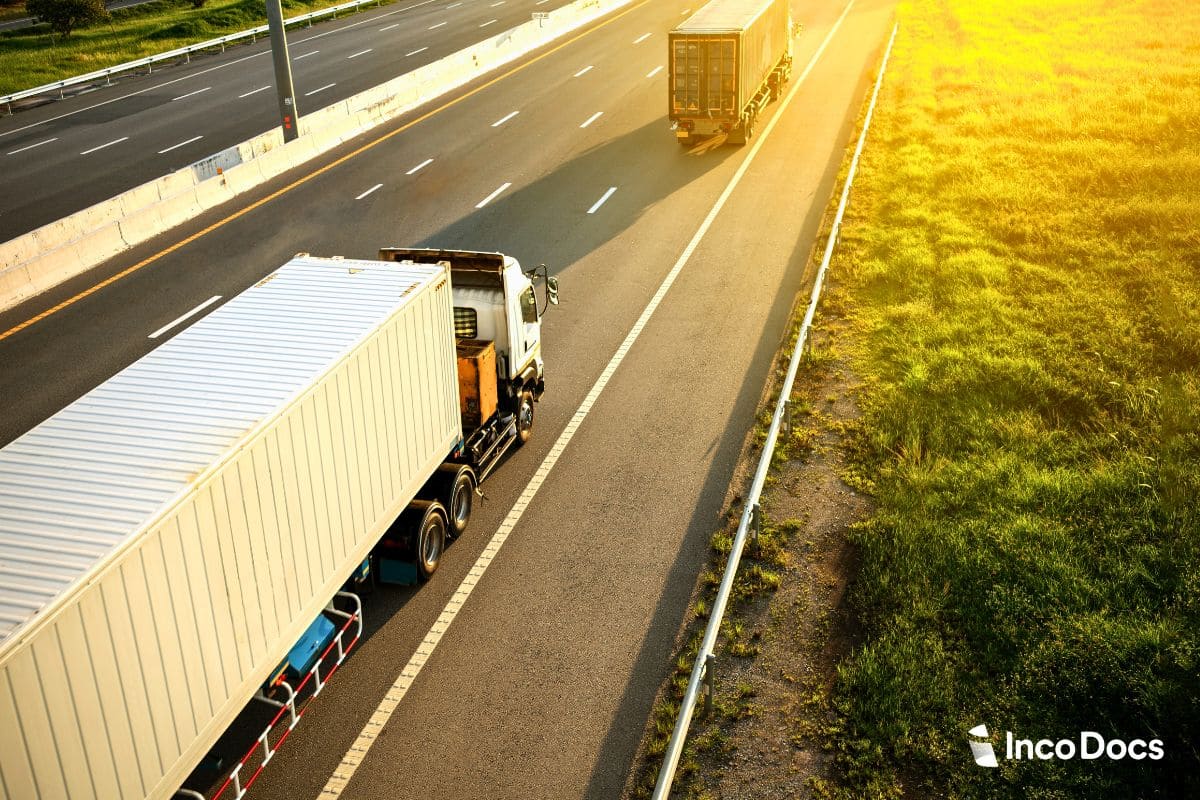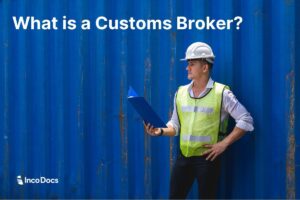Land transportation involves moving goods using ground-based methods such as road, rail, and pipelines. This mode of transport is crucial in logistics, connecting suppliers to consumers and ensuring products move efficiently from ports, warehouses or factories to stores and end-users.
In this blog, we will explore the different modes of land transport, discuss their advantages and challenges, and highlight recent innovations. We will also provide tips on choosing the right transportation partner and examine future trends in land transport.
Types of Land Freight Transportation
Each type of land freight transport has its unique benefits and uses. Understanding these can help businesses choose the best option for their specific needs.
Trucking
Trucking is known for its flexibility and ability to provide door-to-door delivery, making it essential for last-mile logistics. Trucks can transport a wide range of goods, from small parcels to large freight, and can navigate various terrains, reaching even remote locations. This versatility makes trucking a popular choice for many businesses.
Advantages:
- Flexibility: Trucks can handle diverse cargo types and sizes.
- Accessibility: They can reach remote and urban areas alike.
- Speed: Suitable for short to medium distances with quick delivery times.
Challenges:
- Traffic Congestion: Delays caused by traffic can affect delivery times.
- Fuel Costs: Fluctuating fuel prices can impact transportation costs.
- Environmental Impact: Higher carbon emissions compared to rail transport.
Innovations in Trucking:
- Electric Trucks: These are becoming more common, reducing emissions and operational costs.
- Autonomous Vehicles: These promise to reduce human error, increase safety, and ensure consistent delivery times.
- Telematics and GPS Tracking: These technologies provide real-time updates and improve route efficiency, reducing delays and fuel consumption.
Rail Transport
Rail transport is cost-effective for long distances and bulk goods. Trains can carry large volumes, such as minerals, coal, and agricultural products. This method is also environmentally friendly, producing lower carbon emissions per ton-mile compared to road transport, making it a sustainable choice for heavy and bulky shipments.
Advantages:
- Cost Efficiency: Ideal for transporting large volumes over long distances.
- Environmental Benefits: Lower carbon emissions than road transport.
- Reliability: Less affected by weather and traffic conditions.
Challenges:
- Infrastructure Limitations: Requires extensive rail networks and terminals.
- Flexibility: Less adaptable for short distances and door-to-door delivery.
- Initial Costs: High setup costs for rail infrastructure.
Innovations in Rail Transport:
- High-Speed Freight Trains: These can reduce delivery times significantly.
- Eco-Friendly Locomotives: Newer models reduce emissions and fuel consumption.
- Automated Systems: Automation in rail yards and on trains increases efficiency and safety.
Pipeline Transport
Pipeline transport is used for moving liquids and gases, like oil and natural gas. This method is highly efficient, offering a continuous flow with minimal human intervention. Pipelines can transport large quantities over long distances safely, reducing the need for frequent handling and minimizing the risk of spills and leaks.
Advantages:
- Efficiency: Continuous flow of materials with minimal handling.
- Safety: Reduced risk of spills and accidents compared to road transport.
- Cost-Effective: Lower operational costs for transporting large volumes.
Challenges:
- High Initial Investment: Significant cost to build and maintain pipelines.
- Environmental Concerns: Potential for leaks and environmental damage.
- Limited Flexibility: Suitable mainly for specific types of cargo (liquids and gases).
Innovations in Pipeline Transport:
- Smart Pipelines: Equipped with sensors to detect leaks and monitor flow.
- Advanced Materials: New materials reduce the risk of corrosion and leaks.
- Automated Control Systems: Improve efficiency and safety by reducing human intervention.
Summing Up the Pros and Cons
Trucking
| Pros | Cons |
|---|---|
| Highly flexible | Affected by traffic congestion |
| Provides door-to-door delivery | Reliance on fossil fuels |
| Can navigate various terrains and remote areas | Weather dependency |
| Suitable for both short and long distances | Infrastructure issues |
Rail Transport
| Pros | Cons |
|---|---|
| Cost-effective for long distances | Less flexible compared to trucking |
| Can carry large volumes | Affected by rail infrastructure quality |
| Environmentally friendly | Limited to areas with rail networks |
| Lower carbon emissions per ton-mile | Higher initial infrastructure investment |
Pipeline Transport
| Pros | Cons |
|---|---|
| Highly efficient | Limited to transporting liquids and gases |
| Continuous flow with minimal human intervention | High initial setup cost |
| Safe for large quantities over long distances | Vulnerable to leaks and spills |
| Reduces need for frequent handling | Maintenance and regulatory compliance |
Advantages of Land Transportation for Freight

- Lower costs compared to air and sea transport
- Flexibility to handle various terrains and destinations
- Extensive networks reaching remote areas
- Convenient direct deliveries with door-to-door service
Land transportation is a cost-effective and versatile option for businesses, typically costing less than air and sea transport due to lower fuel, packaging, and handling expenses. Its extensive networks of roads and railways enable it to reach urban, rural, and remote areas, ensuring deliveries can be made almost anywhere.
One of the key advantages of land transportation is its accessibility. The widespread network of roads and railways allows goods to be delivered to both cities and rural locations, enhancing the reach of businesses. This extensive connectivity means that even the most remote locations can be serviced efficiently.
Moreover, land transportation offers the convenience of door-to-door delivery. Trucks can transport goods directly from the supplier to the customer’s doorstep, reducing handling points and lowering the risk of damage and delays. This direct delivery process not only smooths out the logistics but also keeps customers satisfied by ensuring a seamless and efficient delivery experience.
Challenges and Disadvantages
- Traffic congestion affecting delivery times
- Environmental impact due to reliance on fossil fuels
- Weather dependency causing delays
- Infrastructure issues requiring well-maintained roads and railways
Traffic congestion is a major challenge. Urban traffic can slow down deliveries. This leads to longer delivery times and possible delays.
The environmental impact is another concern. Land transport relies heavily on fossil fuels. This contributes to pollution and greenhouse gas emissions. It’s a significant factor in environmental degradation.
Weather dependency affects reliability. Adverse weather conditions can cause delays. Heavy rain, snow, or storms can disrupt transport schedules. This makes timing unpredictable.
Infrastructure issues are also problematic. Well-maintained roads and railways are essential. Poor infrastructure leads to wear and tear on vehicles. It also causes delays and increases maintenance costs.
Innovations and Technological Advancements
Innovations in land transportation are transforming the industry, enhancing efficiency, safety, and sustainability:
- GPS Tracking and Real-Time Monitoring: These technologies allow businesses to track shipments accurately and manage logistics better, reducing delays and improving overall efficiency.
- Electric and Autonomous Vehicles: Electric vehicles reduce emissions, while autonomous vehicles improve safety by reducing human error and promise more consistent delivery times.
- Route Optimization Software: This software helps in planning the most efficient routes, taking into account factors like traffic and road conditions, saving time, and reducing fuel costs.
- Telematics: This technology provides data on vehicle usage, driver behavior, and fuel consumption, helping to optimize operations and reduce costs.
Special Considerations for Different Types of Freight
Different types of freight require special handling to ensure safe and efficient transport:
- Special Loads: Heavy machinery and oversized cargo need specific equipment like low-bed trailers and cranes, as well as special permits to ensure safety and legal compliance.
- Dangerous Goods: Transporting dangerous goods requires strict safety measures and compliance with regulations like the ADR in Europe, which sets standards for packaging, labeling, and vehicle types.
- Perishable Goods: Refrigerated transport with temperature control is crucial to prevent spoilage, ensuring timely delivery to keep goods fresh.
When moving large quantities of goods, Full Truckload (FTL) shipping is often the best choice. FTL allows businesses to use the entire truck for their shipment. This method ensures direct and secure transport without stops, minimizing handling and the risk of damage. For more detailed information, you can refer to our guide on Full Truckload (FTL) Explained.
Domestic vs. International Land Transportation
- Domestic Transportation: Involves moving goods within a single country, typically simpler with fewer regulatory hurdles. Trucks and trains are commonly used for direct deliveries to businesses and homes.
- International Transportation: Involves crossing borders, adding complexity with customs procedures and compliance with multiple countries’ regulations. Proper documentation, such as the CMR consignment note, is essential for legal compliance and smoother customs clearance.
Key Differences:
- Regulations: Domestic transport deals with one set of rules, while international transport must comply with multiple regulations.
- Customs: International shipments need customs clearance, involving documents like the CMR consignment note.
- Complexity: International transport is more complex due to border crossings and different legal requirements.
- Flexibility: Domestic transport is usually more flexible and can quickly adapt to changes.
The CMR consignment note ensures all parties have the same information, reducing misunderstandings and legal issues. It also facilitates smoother customs clearance, as it provides authorities with the necessary details about the shipment.
Tips for Choosing the Right Land Transportation Partner

When selecting a transportation partner, consider:
- Experience and Reputation: Look for a partner with proven experience and a strong reputation.
- Fleet Size and Equipment: Ensure they have the necessary fleet and specialized equipment to handle your needs.
- Technology: Advanced technology like GPS tracking and real-time monitoring tools improve service and visibility.
- Safety Standards: Ensure the partner adheres to safety standards and regulations to prevent accidents.
Future Trends in Land Transportation
Future trends in land transportation focus on sustainability and technological advancements:
- Sustainability: Increased emphasis on eco-friendly practices and reducing carbon footprints.
- Electric and Autonomous Vehicles: Promising higher efficiency and lower emissions.
- Smart Logistics: Development of advanced logistics software and smart transport networks to enhance capabilities.
- Blockchain Technology: Improving transparency and security in logistics, providing real-time tracking and more efficient handling of documentation.
Conclusion
Land transportation is an important and big part of logistics. We’ve covered its types, advantages, challenges, and the importance of choosing the right partner.
Key Points:
- Different types of land transport include trucking, rail, and pipelines.
- Land transportation offers cost-effectiveness, flexibility, and accessibility.
- Challenges include traffic congestion, environmental impact, and infrastructure needs.
- Technological advancements like GPS tracking and electric vehicles improve efficiency.
- Selecting a reliable transportation partner is essential for success.
Making informed decisions about land transportation can enhance your logistics operations. Consider the discussed factors to ensure efficient, safe, and reliable transport for your goods.







